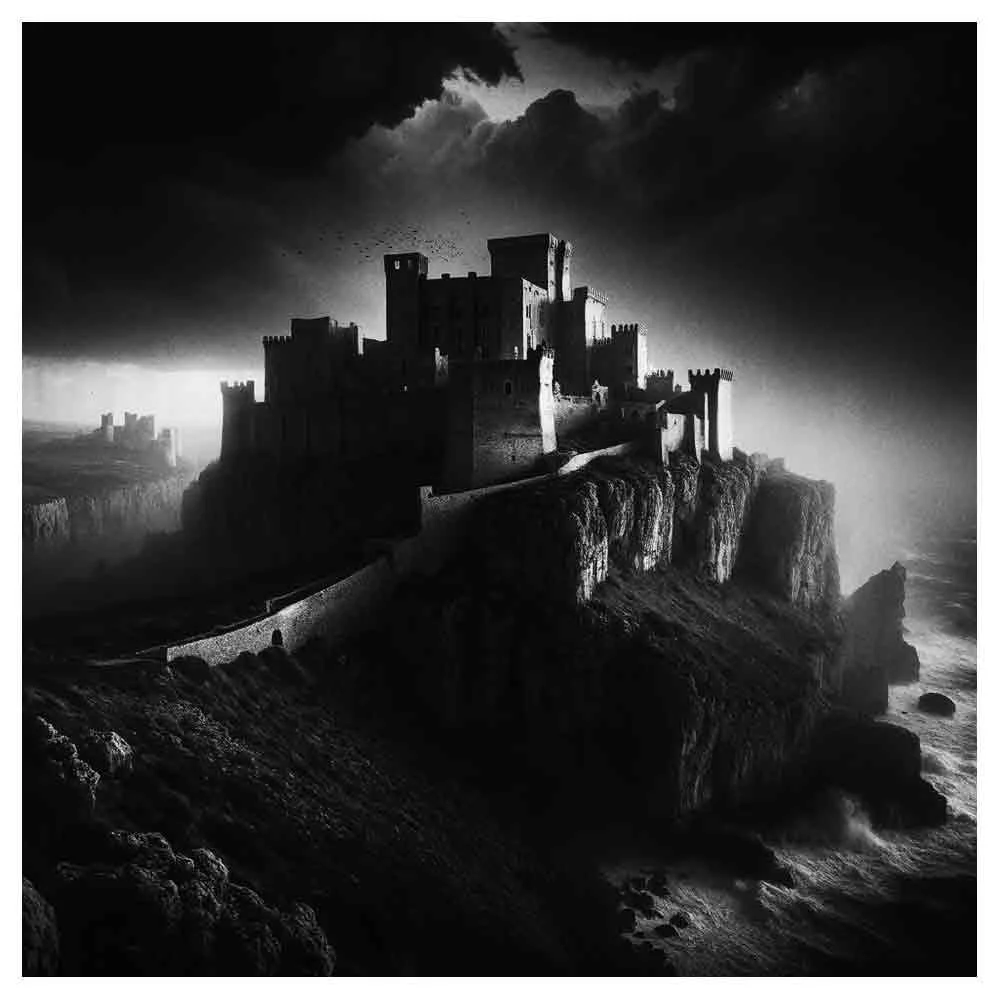Character Motivation Ideas to Kickstart Your Next Story
Are you feeling lost in the maze of creating compelling characters? Dive into the world of character motivations and give your characters the vigor they deserve.
This comprehensive guide, packed with a complete list of 101 character motivation examples, will help breathe life into your next story.
What is Character Motivation?
Character motivation is the driving force behind a character's actions, decisions, and goals. Be it an intrinsic need for self-fulfillment or an external need for survival, character motivations turn the cogs of your story's wheel.
Understanding Types of Character Motivation
Motivations are two-pronged, encompassing intrinsic Motivation and Extrinsic Motivation.
Intrinsic Motivation: These are internal motivations, the psychological or existential needs that originate within the character's psyche. The pursuit of knowledge, the need for self-actualization, and the desire for creative fulfillment are examples of intrinsic Motivation.
Extrinsic Motivation: Motivated by external factors, these are external needs that stem from the character's environment or circumstances. The pursuit of wealth, the need for professional achievement, and the striving to meet basic needs represent extrinsic Motivation.
Complex characters often juggle multiple motivations, making their journey an engaging mixture of intrinsic needs and extrinsic motivations.
This blend leads to believable motivations that create conflict and develop a believable character arc.
The Character Motivation Panorama: 101 Examples
Let's delve into a whirlwind of character motivation examples to ignite your writing prowess.
Intrinsic Motivations
Quest for Knowledge: A character driven by the thirst for knowledge, just like Sherlock Holmes.
Self-Actualization: A character striving for self-fulfillment like Elle Woods in Legally Blonde, pursuing a law degree.
Revenge: The fiery Motivation that pushes a character like The Count of Monte Cristo to plot an act of intricate revenge.
Personal Growth: A character like Elizabeth Bennet from Pride and Prejudice seeks self-improvement.
Creative Fulfillment: A character like Jo March in Little Women desires to be a successful writer.
Love: A character is seeking love and intimate relationships, like Mr. Darcy in Pride and Prejudice.
Ambition: A character filled with aspirations, like Scar from The Lion King.
Curiosity: A character driven by a curiosity about the world around them, like Alice from Alice in Wonderland.
Redemption: A character seeking to right a past wrong, like Ebenezer Scrooge in A Christmas Carol.
Fear: A character acting out of fear, such as Harry Potter, must confront his fear of Voldemort.
Freedom: A character yearning for liberty, like Django in Django Unchained.
Loyalty: A character is motivated by steadfast loyalty to a person or cause, like Samwise Gamgee in The Lord of the Rings.
Faith: A character is driven by their religious or spiritual beliefs, like Santiago in The Alchemist.
Acceptance: A character striving for acceptance, like Quasimodo in The Hunchback of Notre Dame.
Compassion: A character acting out of concern for others, like Mother Teresa.
Extrinsic Motivations
Survival: A character like Katniss Everdeen from The Hunger Games whose primary Motivation is survival.
Physical Safety: A character-driven to maintain their safety, like Paul Sheldon in Misery.
Freedom is a character striving for liberation, like Andy Dufresne in Shawshank Redemption.
Wealth: The allure of riches driving a character like Jay Gatsby.
Professional Achievement: A character like Michael Scott from The Office aims for professional recognition.
Justice: A character driven by a need to see justice served, like Batman.
Love Interest: A character motivated by their affection for someone else, like Romeo from Romeo and Juliet.
Power: A character desiring control or influence over others, like Cersei Lannister from Game of Thrones.
Recognition: A character who desires acknowledgment from others, like Narcissus in Greek Mythology.
Social Status: A character striving to climb the social ladder, like Pip from Great Expectations.
Family: A character motivated by their family's well-being or honor, like Hector in The Iliad.
Fear: A character-driven by fear of external threats or consequences, like Winston Smith in 1984.
Honor: A character acting to preserve their integrity or reputation, like in Othello.
Duty: A character compelled by their sense of responsibility, like Captain America in Marvel's Cinematic Universe.
Friendship is a character motivated by deep friendships, like Frodo Baggins in The Lord of the Rings.
Every Motivation adds a new layer to your character, making them more human and relatable to your readers.
Whether your character is driven by an internal desire for self-actualization or an external fear for their life, their psychological needs and motivations will guide their actions and decisions, create conflicts, and propel your story forward.
Character Motivation in Action
Intricate character development hinges on the character's Motivation within a given scene. Let's dissect some examples:
Katniss Everdeen, The Hunger Games: Katniss's Motivation for participating in the Hunger Games stems from her love for her sister (extrinsic) and her will to survive (intrinsic). Her multiple motivations make her character complex and engaging.
Elle Woods, Legally Blonde: Elle's journey begins with an extrinsic motivation—to win back her boyfriend. However, as the story progresses, her Motivation shifts towards achieving professional success and self-fulfillment (intrinsic motivations), adding depth to her character arc.
Dexter Morgan, Dexter: Dexter is a serial killer with a twisted sense of justice. His extrinsic Motivation—to maintain his day job and appear normal—conflicts with his intrinsic need to kill other killers. This internal conflict creates a fascinating character study.
Crafting Believable Motivations
To craft believable motivations, you must ensure that they align with the character's personality, backstory, and the world they inhabit. Here are some tips to achieve this:
Refer to Maslow's Hierarchy: A fantastic framework for creating diverse character motivations. Remember, a character's Motivation could arise from any level of this hierarchy—physiological, safety, love and belonging, esteem, and self-actualization needs.
Real-Life Parallels: Real life is complex, and so are real-life motivations. When creating a character's motivations, draw parallels from real-life experiences.
Backstory Matters: The past shapes the Present. Ensure that the character's backstory aligns with their current motivations.
Conflict is King: Conflicting motivations create tension, intrigue, and dynamic character growth.
Believability: Whether it's an alien striving for intergalactic peace or a girl pursuing her dreams in a small town, the character's motivations should be believable within the realm of your story.
Final Words
Whether you're creating a main character or a secondary character, understanding their motivations—be it one Motivation or multiple motivations—is crucial.
The motivations will dictate their actions, fuel the conflict, and move your story forward. Readers connect and invest in characters driven by powerful and relatable motivations.
Remember, writers, creating compelling character motivations is not just about adhering to a list—it's about understanding the basic human needs, the psychological intricacies, and the vast spectrum of human behavior.
After all, at the heart of every good story are characters that readers can root for, relate to, and remember.
Good luck on your writing journey!
Frequently Asked Questions about Character Motivations
What is Character Motivation?
Character motivation is the reasons that explain, justify, or propel a character's actions in a story.
They are the "why" behind a character's choices and actions and are essential in character development and plot progression.
What is the difference between Intrinsic and Extrinsic Motivation?
Intrinsic Motivation comes from within the character and is driven by internal rewards, like personal satisfaction or self-improvement.
External rewards or external needs or consequences, like praise, fame, or avoidance of negative outcomes, drive extrinsic Motivation.
How vital is Character Motivation in a story?
Character motivation is crucial in a story, and it is human motivation that drives the plot forward, influences character development and interactions, and helps establish an emotional connection with the reader.
How can I make my Character's Motivation believable?
To make a character's Motivation believable, ensure it aligns with their personality, backstory, and circumstances.
Make sure their motivations evolve as they grow and respond to the events in the story.
Can a Character have more than one Motivation?
Absolutely. In real life, people often have multiple motivations. Complex characters in stories can and should have numerous motivations that may even conflict with each other, adding depth to their character arc.
How do I show my Character's Motivation in my story?
Show your character's motivations through their actions, choices, and dialogue. You can also reveal it through their thoughts, feelings, internal monologues, or backstory.
Can Character Motivation change throughout a story?
Yes, a character's Motivation can and often does change throughout the story, reflecting their growth and reactions to the plot's events.
What if my character seems to lack Motivation?
Your character's lack of Motivation might make them seem flat or uninteresting. Consider their goals, desires, fears, and the obstacles they face.
Once these are clear, the motivations often become apparent.
How can character Motivation increase tension in a story?
When a character's motivations conflict with their circumstances, tension arises. For instance, a character might desperately want something they can't have or fear the very thing they must do.
This tension drives the plot and keeps readers engaged.
How do I handle conflicting motivations in character?
Conflicting motivations can add depth to a character and the story. A character might struggle to decide between two desirable outcomes, such as choosing between a love interest and a professional achievement.
Alternatively, they may be torn between a lesser of two evils. Such conflicts can lead to intriguing plot developments and substantial character growth.
How can understanding character motivations improve my writing?
Understanding your characters' motivations can improve your writing by adding depth to your characters and making them feel more natural.
It helps you understand what would drive them to act a certain way, creating a believable narrative. Furthermore, it can help maintain consistent character behavior, which is crucial for reader immersion.
Are motivations always necessary for minor characters?
While it's not always necessary to explicitly outline motivations for minor characters, giving them at least rudimentary motivations can add depth to your story and make the world feel more immersive and believable.
How can Abraham Maslow's hierarchy of needs drive a protagonist's motivation in fiction?
A protagonist might start by seeking basic needs like survival but gradually progress towards self-actualization, aligning their actions with this structured motivation to develop a more compelling story arc.
In what ways can a character's motivation to protect a loved one impact the dynamics of power and control in a novel?
Protecting a loved one can elevate stakes, introduce moral dilemmas, and drive characters to extreme actions, thereby exploring deeper layers of power dynamics and control within the storyline.
How can external motivations like a new job or financial security conflict with internal motivations in creating believable characters?
Characters driven by external motivations such as financial security may clash with internal desires like pursuing a dream job, providing a realistic depiction of personal conflict and societal pressures.
What are the three categories of motivation that can help define a character's actions, and can you give an example of each?
Existential (survival), social (reputation, belonging), and ego (pride, achievement). For instance, a detective's existential motivation to solve a case, a teenager's social motivation to fit in, and a businessman's ego-driven goal to win at all costs.
How can the antagonist’s motivation to create chaos serve as a rational and realistic driving force in a story?
An antagonist motivated by a desire to disrupt societal norms can introduce compelling and valid reasons for conflict, testing the protagonist's morality and resolve in a way that mirrors real-world struggles.
Can a character's journey from fearing to embracing danger be a metaphor for overcoming personal limitations?
Yes, this journey can symbolize personal growth. For example, a timid person might initially fear public speaking but decides to face this fear to achieve career advancement, each step bringing them closer to self-improvement.
How can the need for survival influence a character’s moral decisions in high-stakes scenarios like those often found in thrillers and action films?
Survival instincts can lead characters to make morally ambiguous choices, such as betraying allies to protect themselves, which adds layers of tension and makes their decisions more relatable and suspenseful.
What role does intrinsic motivation play in crafting villains with believable and relatable drives, such as the Joker’s quest for societal acknowledgment?
Villains with intrinsic motivations, such as the Joker’s desire for societal validation, offer a deeper look into their psyche, making their evil deeds a byproduct of their unmet emotional needs and philosophical standings, which can inspire both fear and empathy in readers.
How can exploring different types of motivations enhance the way characters react to unexpected events in a story?
Diverse motivations allow characters to exhibit unique, surprising reactions to the same event, based on what they most deeply value, thus enriching the story's complexity and the inter-character dynamics.
What strategies can authors use to ensure motivations remain consistent yet evolve logically over the course of a novel?
Authors can outline their characters' motivations early on and revisit these motives as characters face new challenges.
Ensuring that changes or growth in motivations are justified by pivotal events helps maintain believability.
Can introducing conflicting motivations between a protagonist and their partner amplify the emotional depth of a romantic subplot?
Yes, conflicting motivations, such as one partner wanting to start a family while the other prioritizes career success, can add significant emotional layers and realism to a romantic subplot, enhancing both character development and reader engagement.
How should authors handle the revelation of a character's hidden motivations to maximize impact on the reader?
Revealing hidden motivations through climactic events or turning points can profoundly impact the reader's perspective and emotional investment in the character, especially if these revelations shift the reader's alignment and sympathies.
What techniques can writers employ to subtly hint at a character’s motivations without making it too obvious?
Writers can use foreshadowing, indirect dialogue, and symbolic actions to subtly hint at motivations, allowing readers to piece together clues and build a deeper understanding of the character’s drives on their own.






























